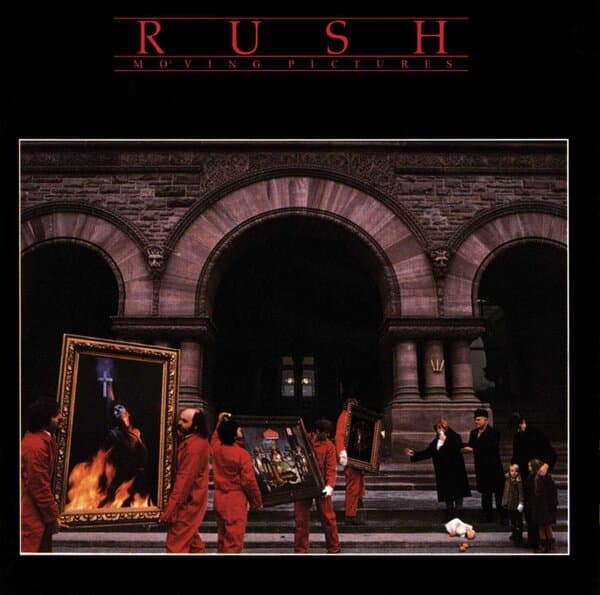Tonight (December 30th) on the world famous Classic Album at Midnight on Radio Nova we’re playing Rush’s Moving Pictures.
The album is presented in full with no commercials or interruptions.
Formed in late 1960s Toronto as a rock/blues cover outfit, Rush went through several line-up changes before arriving at the power trio of vocalist/bassist Geddy Lee, guitarist Alex Lifeson and drummer Neil Peart. It was Peart’s addition that turned the band towards a progressive rock sound with science fiction inspired lyrics. On their early albums Rush became known for epic, multi-chapter songs with complex arrangements.
By the late ’70s the prog rock era was largely over. For their seventh album, 1980’s Permanent Waves, Rush would turn to more radio friendly material, drawing influence from the New Wave movement of the era. This approach continued with their eighth album, Moving Pictures.
The band had initially planned on following up Permanent Waves with a live album, but they began working on new material during sound checks while on tour. The live album was scrapped in favour of a brand new studio album.
In the summer of 1980 the band stayed at Ontario’s Stony Lake to write new songs. With an album’s worth of material ready, Rush moved to Quebec’s Le Studio in October to begin recording. Initially it took the band a while to familiarise themselves with the studio’s newly installed digital 48-track machine, and it was producer Terry Brown’s first time working with the digital format.
To ensure the highest quality, recordings were transferred onto fresh tape with the original stored away so as not to suffer damage from repeated playback. Peart adopted a pressure zone microphone, which when taped to his chest, picked up only direct sound with no reverb signals. Lee, Lifeson and Peart were joined by keyboardist Hugh Syme, who also designed the album’s cover artwork.
While Rush continued the more radio-friendly approach of Permanent Waves, their prog roots are still very much in evidence on Moving Pictures, particularly on the instrumental YYZ and the epic, 10-minute plus The Camera Eye. The album’s most famous song, Tom Sawyer, began life as a potential track for a Max Webster album, but that band’s songwriter Pye Dubois offered it to Rush instead.
Moving Pictures contains seven tracks. On Side A are Tom Sawyer; Red Barchetta; YYZ; and Limelight. On Side B are The Camera Eye; Witch Hunt; and Vital Signs.
The album was released on February 12th, 1981. It received its first airing a day earlier on Rick Ringer’s radio show on CHUM-FM in Toronto, on which Lee was a guest. Moving Pictures was a number one hit in the band’s native Canada and peaked at number three in both the US and UK. To date it’s Rush’s biggest selling album in the US with over five million copies sold. Tom Sawyer would become one of the most played songs on classic rock radio stations, and along with Limelight was inducted into the Canadian Songwriters Hall of Fame.
Moving Pictures is widely considered one of the finest prog rock records ever recorded. Rolling Stone list it at number three on its list of the 50 greatest prog rock records of all time, beaten only by Pink Floyd’s Dark Side of the Moon and King Crimson’s In the Court of the Crimson King. It ranks at number 379 on that publication’s list of the 500 greatest albums of all time.
You can rock out to Moving Pictures at midnight tonight on Radio Nova.








